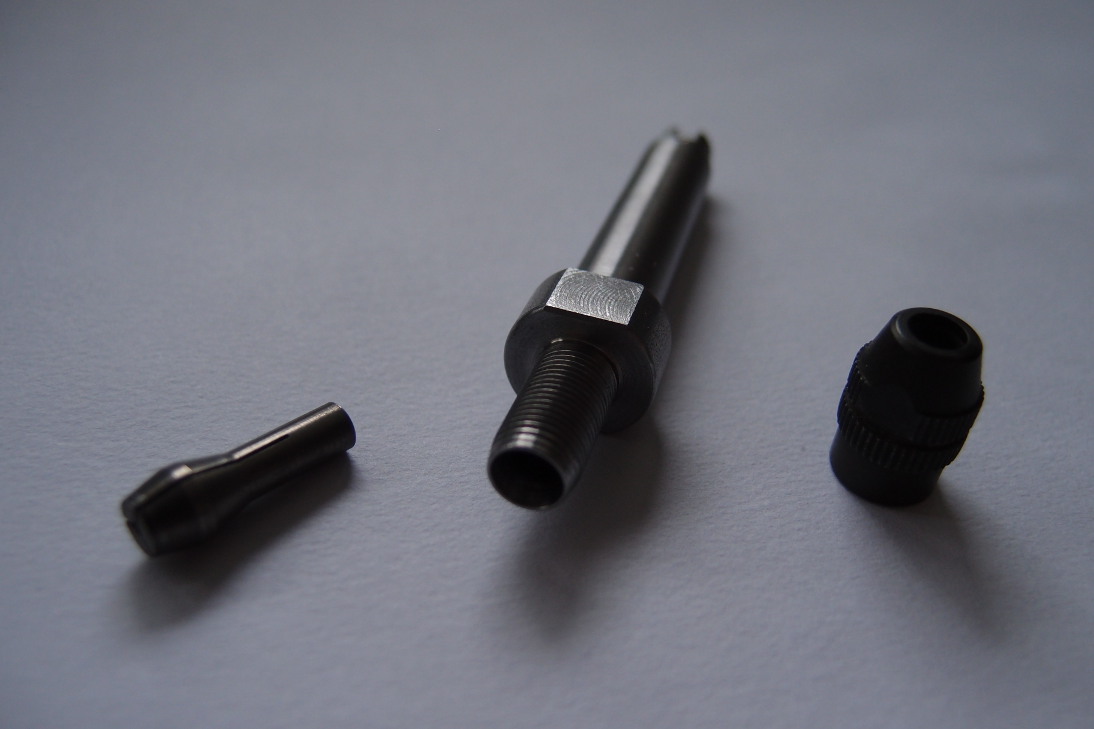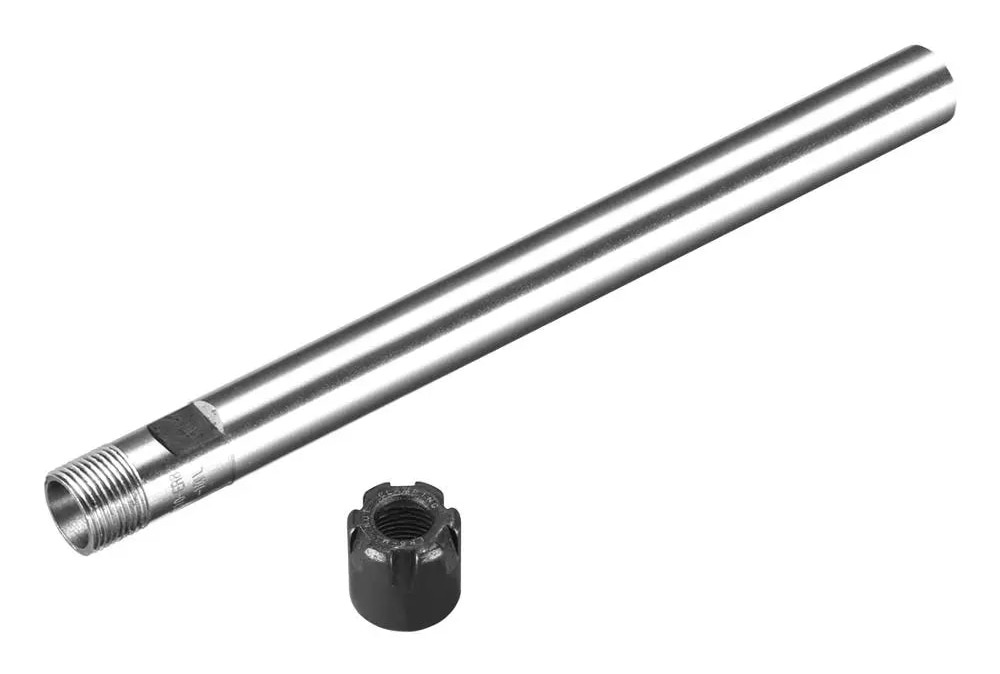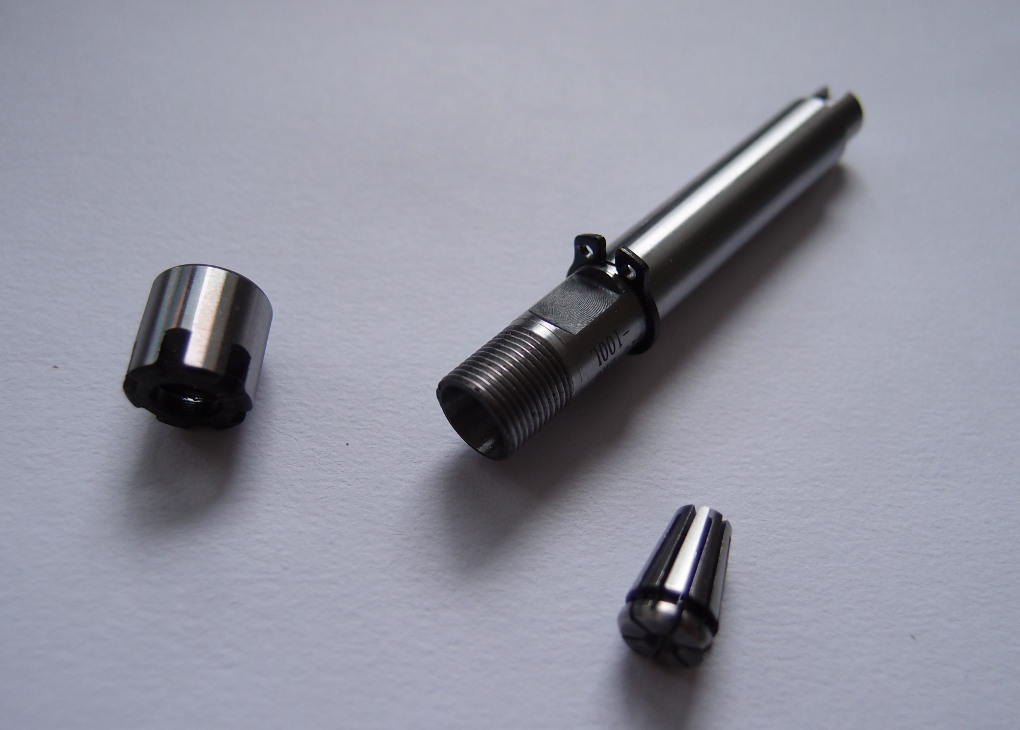Introduction
A MF70 milling machine made by Proxxon is an useful piece of equipment and even more so when converted to CNC. Due to the nature of its construction it is naturally suited to machine easy to machine materials such as aluminium, brass, wood or plastics. While I use it mostly for machining graphite for EDM electrodes, I found that the tool runout is much larger than it would be acceptable for usage of endmills or drills with a very small diameter. It looks like the collets are the main source of error here and while it is possible to buy a few sets of them and ask Fortuna for a favor in finding the one with a very small runout, I think making a new spindle is a more predictable process. While making the whole spindle lock, stock and barrel would be too time consuming, it could be made from a cheap collet holder with only some minor modifications.

Prerequisites
- A lathe with all cutting tools required,
- an ER8 collet holder,
- a M3 tap,
- a d3 keyway endmill,
- a DIN 471 retaining ring.
Preparation and manufacture
The longest part of the whole process was the delivery period, which took about five weeks. Also do not forget that the collet nut wrench and the the ER8 collets are equally important as the spindle itself.
With the collet holder at hand we can clearly see, what has to be done: the groove for a retaining ring has to be cut, the shank has to be shortened, the rear part of the future spindle has to be turned down, a M3 thread for the retaining screw has to be cut and finally, two opposite slots need to be milled. As the old spindle and the collet holder diameter is equal (10 mm), no modifications to the outer diameter surface has to be done. The slide fit with bearings is the same (could be improved).

To determine how much it needs to be cut of the shank, cut a groove for a retaining ring as close as possible to the front of the holder. When the groove is made, insert the retaining ring in place. Now you can measure the old spindle so it can be known, how long (from a rear retaining ring face to the rear face of the new spindle) should the new one be. When the final length of the new spindle is established, the cylindrical surface on the rear end can be cut. After it is done, the hole is drilled and a thread is cut. Finally the two opposite slots are cut the same way, as on the old spindle.

The holder is hardened and leaves a fine finish when machined with a carbide tooling. One could anneal the rear part for the thread cutting purposes but I rather cut it hard. In this case the work with a tap has to be done very carefully, or a boring and time gobbling job of a small broken tap removal may be required.
Conclusion
As it can be seen, the replacement spindle can be cheaply made from a purchased collet holder. When the spindle is assembled, runout can be measured. In my case it was about 0,01 mm, but the main source of runout will be a collet. Total runout measured with a tool in the collet was around 0,04 mm which is at least two times better than with the stock spindle and collets. I guess it could be improved by a more accurate collet holder, but for a few euros spent one can not expect the best.
25.1.2021UPDATE 2.8.2023
After replacement of the spindle bearings, the spindle runout measures max. 0,01 mm.


